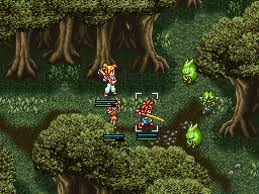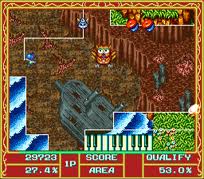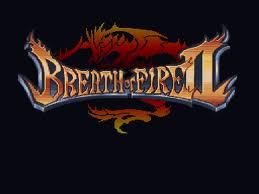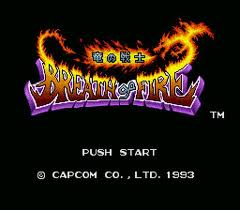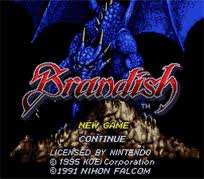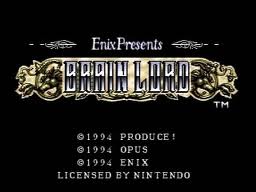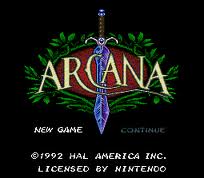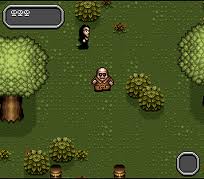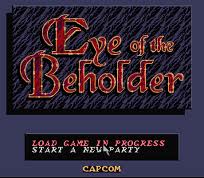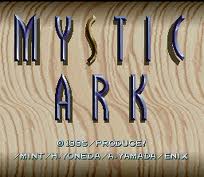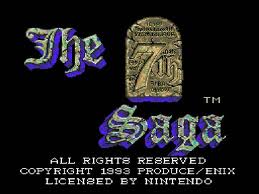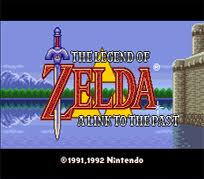Category: RPG
102 game(s)All RPG Games for SNES
Chrono Trigger
Chrono Trigger (Japanese: クロノ・トリガー, Hepburn: Kurono Torigā?) is a role-playing video game developed and published by Square (now Square Enix) for the Super Nintendo Entertainment System in 1995. Chrono Trigger's development team included three designers that Square dubbed the "Dream Team": Hironobu Sakaguchi, the creator of Square's Final Fantasy series; Yuji Horii, a freelance designer and creator of Enix's popular Dragon Quest series; and Akira Toriyama, a freelance manga artist famed for his work with Dragon Quest and Dragon Ball. Kazuhiko Aoki produced the game, Masato Kato wrote most of the plot, while composer Yasunori Mitsuda scored most of the game before falling ill and deferring remaining tracks to Final Fantasy composer Nobuo Uematsu. The game's story follows a group of adventurers who travel through time to prevent a global catastrophe.
Square re-released a ported version by Tose in Japan for Sony's PlayStation in 1999, later repackaged with a Final Fantasy IV port as Final Fantasy Chronicles in 2001 for the North American market. A slightly enhanced Chrono Trigger was released for the Nintendo DS on November 25, 2008, in North America and Japan, and went on sale in Australia on February 3, 2009 and in Europe on February 6, 2009. The game was never released in PAL territories before the Nintendo DS version.
Chrono Trigger was a critical and commercial success upon release and is considered today to be one of the greatest video games of all time. Nintendo Power magazine described aspects of Chrono Trigger as revolutionary, including its multiple endings, plot-related sidequests focusing on character development, unique battle system, and detailed graphics. Chrono Trigger was the third best-selling game of 1995, and the game's SNES and PlayStation iterations have shipped 2.65 million copies as of March 2003. The version for the Nintendo DS sold 790,000 copies as of March 2009. Chrono Trigger was also ported to mobile phones, Virtual Console, the PlayStation Network, iOS devices, and Android devices.
Cacoma Knight
Breath of Fire 2
Breath of Fire II (Japanese: ブレス オブ ファイアII 使命の子 Hepburn: Buresu obu Faia Tsū: Shimei no Ko?, Breath of Fire II: The Destined Child) is a role-playing video game developed and published by Capcom. First released in 1994, the game was licensed to Laguna for European release in 1996. It is the second entry in the Breath of Fire series. It was later ported to Game Boy Advance and re-released worldwide. The game has been rated by the ESRB for release on Wii's Virtual Console and was released in North America on August 27, 2007. Nintendo of Europe's website mistakenly announced it for release on July 27, 2007, but it was in fact released two weeks later, on August 10, 2007.
Unlike later installments in the series, Breath of Fire II is a direct sequel to Breath of Fire. Set 500 years after the original game,[1] the story centers on an orphan named Ryu Bateson, whose family vanished mysteriously long ago. After his friend is falsely accused of a crime, Ryu embarks on a journey to clear his name.
Breath of Fire
Breath of Fire (Japanese: ブレスオブファイア, Hepburn: Buresu obu Faia?) is a role-playing video game series developed by Capcom. It originated on the Super Nintendo Entertainment System in 1993. The series is notable for its recurring characters and ambiguous continuity; though each game is its own self-contained story, the names of the two lead characters are, invariably, Ryu and Nina.
The story commonly involves an adventurer named Ryu who can shapeshift into different types of dragons. Over the course of his journey, he befriends Nina, a girl with wings. At its inception, Breath of Fire took place in a medieval fantasy style fictional world. Following the mainstream success of Japanese role-playing games in the 1990s, the series began using the original anime-style artwork for later Western releases of the games (rather than the Westernized art that was drawn specifically for the Western releases of the first two games), post-apocalyptic themes, and an increased emphasis on character development. Despite these changes, the core structure of Breath of Fire remains largely linear and plot-focused. As of 2003, five Breath of Fire titles have been released, with three games being ported to handheld game consoles as well as Nintendo's Virtual Console. To date, the series has sold over 3 million units worldwide.
Brandish
Brandish (ブランディッシュ?) is an action role-playing video game by Nihon Falcom. Originally released in 1991 for the NEC PC-9801 and FM Towns, it was later ported to the Super Nintendo Entertainment System (SNES) and PC Engine CD-ROM² (TurboGrafx-CD) in 1994-1995, including an expanded re-release titled Brandish Renewal. The only English language version of the game is the SNES version, which was published by Koei in Japan in 1994 and in North America in 1995.
Brandish was the first title in Nihon Falcom's series of the same name. It was followed by three sequels: Brandish 2: The Planet Buster, Brandish 3: Spirit of Balcan, and Brandish VT / Brandish 4, originally released between 1991 and 1996.
A complete remake of the original Brandish featuring 3D graphics was released for the PlayStation Portable in 2009, titled Brandish: The Dark Revenant (ブランディッシュ~ダークレヴナント~?).
Brain Lord
Arcana
Arcana, originally released as Card Master: Rimsalia no Fuuin (カードマスター リムサリアの封印?), is a 1992 RPG for the SNES by HAL Laboratory.
The game represents all of its characters as cards, but plays like a dungeon-crawling RPG, rather than a card-based game. In keeping with this metaphor, the death of a character results in a 'torn' card, and the magical properties of some cards are used to explain abilities of the game's characters.
Addams Family Values
Addams Family Values is an Action RPG based on the film of the same name produced by Ocean Software and released in 1995 for the Sega Mega Drive and Super NES.
AD&D - Eye of the Beholder
Eye of the Beholder is a role-playing video game for computers and video game consoles developed by Westwood Studios. It was published by Strategic Simulations, Inc. in 1991 [1][2] for the MS-DOS operating system and later ported to the Amiga, the Sega CD, Game Boy Advance and the SNES. The Sega CD version features an exclusive soundtrack composed by Yuzo Koshiro.[3] A port to the Atari Lynx handheld was developed by NuFX in 1993, but never officially released.
The game had two sequels, Eye of the Beholder II: The Legend of Darkmoon, released in 1991, and Eye of the Beholder III: Assault on Myth Drannor, released in 1993. The third game, however, was not written by Westwood, who had been acquired by Virgin Interactive in 1992 and created the Lands of Lore series instead.
7th Saga 2 - Mystic Ark
Mystic Ark (ミスティックアーク Misutikku Āku) is a 1995 role-playing video game developed by Produce and published by Enix for the Super Famicom. The video game was only released in Japan. Mystic Ark has strong similarities to the games The 7th Saga and Brain Lord, also developed by Produce and distributed by Enix. The game was being localized for a North American release under the title 7th Saga II, but the release was cancelled.
7th Saga
The 7th Saga, called Elnard (エルナード?) in Japan, is a role-playing video game for the Super Nintendo Entertainment System. The player chooses one of seven playable characters, all of whom separately embark on a quest to locate seven magical runes. As the player progresses through the game from one town to the next, they encounter the other six characters on multiple occasions. The player may partner with one of the other playable characters to fight as a team, and they may also fight against other playable characters for the runes.
Notable unique innovations include the use of a crystal ball "radar" that allows players to see enemies approaching their character in dungeons and in the overworld. This means that combat is not totally random, as players may theoretically avoid enemies (although enemies move extremely quickly and randomly, making combat difficult to avoid). The game also uses Mode 7 graphic effects to create the transition between exploration screen and battle screen.
The game is particularly known for its unforgiving difficulty due to balance changes made in its localization; enemies were given much higher stats, and the player character's stat increases were reduced (the other playable characters retain the original stat increases, so they will always surpass the player character's level).
The Legend of Zelda - A Link to The Past
The Legend of Zelda: A Link to the Past, known as Zelda no Densetsu: Kamigami no Triforce (ゼルダの伝説 神々のトライフォース Zeruda no Densetsu: Kamigami no Toraifōsu?, lit. "The Legend of Zelda: The Triforce of the Gods") in Japan, is a 2D action-adventure video game developed and published by Nintendo for the Super Nintendo Entertainment System video game console. It is the third installment in The Legend of Zelda series and was released in 1991 in Japan and 1992 in North America and Europe. Shigeru Miyamoto and his team were solely responsible for this game's development.
The plot of A Link to the Past focuses on Link as he travels on a journey to save Hyrule, defeat Ganon and rescue the seven descendants of the Sages. A Link to the Past uses a 3/4 top-down perspective similar to that of the original The Legend of Zelda, dropping the side scrolling elements of Zelda II: The Adventure of Link. A Link to the Past introduced elements to the series that are still commonplace today, such as the concept of an alternate or parallel world, the Master Sword and other new weapons and items.
Released to critical and commercial success, A Link to the Past was a landmark title for Nintendo and is widely considered today to be one of the greatest video games of all time. A Link to the Past has sold over 4 million units world wide and has been ported to both the Game Boy Advance (with slight changes) and the Virtual Console for the Wii and Wii U. These ports were very popular and contributed to the overall success of the game.
